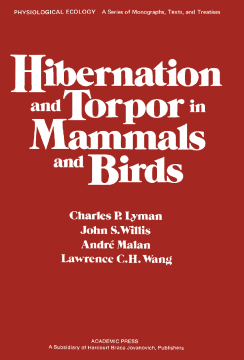
Additional Information
Book Details
Abstract
Hibernation and Torpor in Mammals and Birds explores the physiological factors that control hibernation and torpor in birds and mammals. This text covers topics ranging from metabolism in hibernation to the role of endocrines, respiration and acid-base state in hibernation, and theories of hibernation.
This book is comprised of 14 chapters and begins with an overview of some clear-cut definitions and why mammals and birds hibernate. The reader is then introduced to the variations from euthermia that have been observed among birds and mammals. To give some structure to this listing, the approach is phylogenetic, starting with the birds and proceeding through the primitive to the more advanced mammals. Subsequent chapters explains the process of entering hibernation and the hibernating state, itself; capability of a species in natural hibernation to arouse from that state using self-generated heat; physiological changes at the start of a spontaneous arousal; and physiological mechanisms underlying the ability of hibernators to rewarm. Consideration is also given to intermediary metabolism in hibernation, cold adaptation of metabolism in hibernators, and the response of hibernators to various extrinsic influences such as neoplastic growth, radiation injury, and parasitism and symbionts.
This book will be of interest to students and researchers in fields ranging from zoology to physiology and biophysics.
